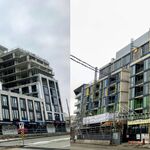Brampton searching for new vision after hire of urban planner
The city has hired award-winning urban planner Larry Beasley to reinvent the rapidly growing suburb, but will it bring the change residents desperately want?
[...]
Residents of Brampton say that the city is long overdue for someone like Beasley to give the community some direction. The city still lacks both the alternative transportation infrastructure and business hubs of other large cities, despite being situated in between Toronto and Waterloo, in Ontario’s planned innovation corridor.
Brampton also doesn’t have a university, or a well-defined white collar labour market for residents to work in, despite being home to one of the youngest demographics in the GTA. There is still no “downtown”— in fact, according to one resident, “The Rose Theatre has been struggling for a long time to get more people to come.” And the waiting lists for affordable housing in this rapidly growing city are unsustainably long.
“Brampton is a big city but thinks like a small town,” said Harpreet Zingh, co-founder of Lab B, a startup incubator based in the city. “For so long, we’ve had unstrategic growth simply for the sake of growth.”
[...]




